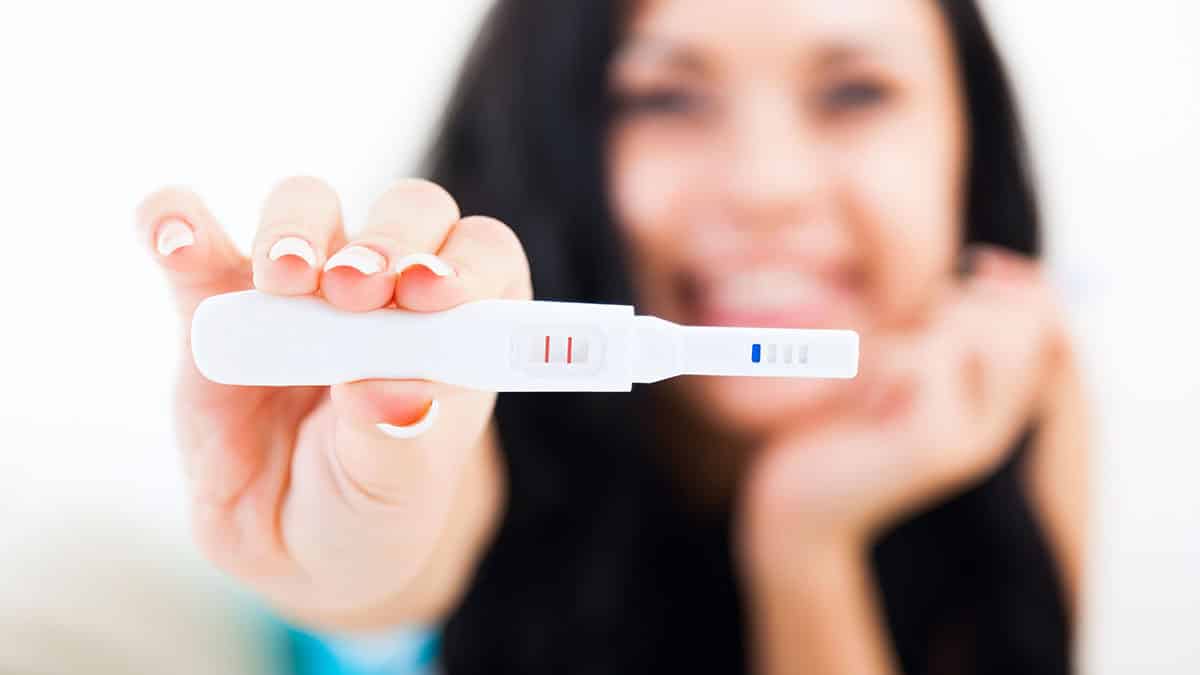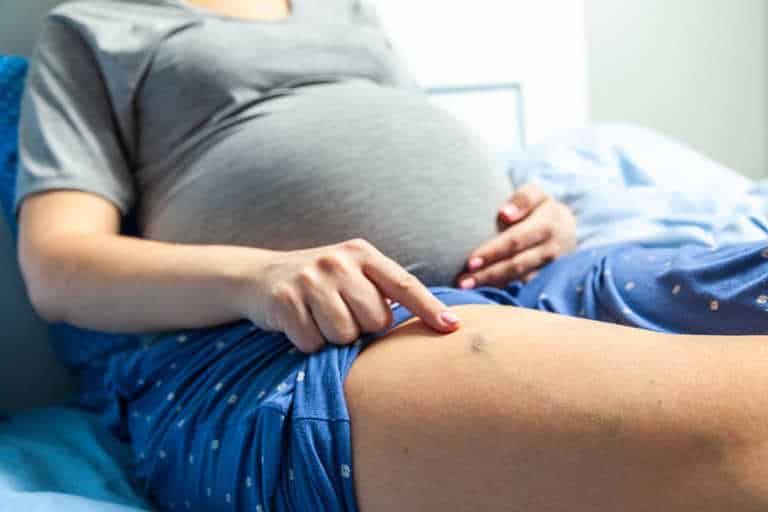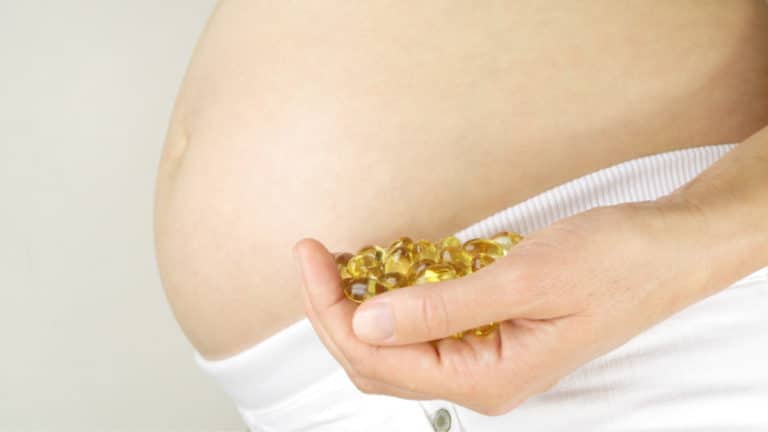If you’re still trying to get pregnant or just found out you’re pregnant, this is the article for you! A whole bunch of exciting stuff happens in the first 6 weeks of pregnancy, some of it before you even conceive. This guide is intended to show you what you can expect from your pregnancy as you come upon each week.
If you don’t have the slightest clue what your conception date was, you may be trying to figure out how far along you are in your pregnancy based on early signs of pregnancy. But because symptoms strike every woman so differently – or not at all – you shouldn’t rely solely on symptoms to tell you IF or WHEN you got pregnant.
See a doctor for an evaluation and ultrasound! It’s the most accurate way to find out your due date if your calendar isn’t any help. Don’t be embarrassed to say you have no idea when your last period was because believe me, you’re not the first.
If you aren’t already, you need to be taking a prenatal multivitamin ASAP and throughout your whole pregnancy. Don’t know where to start? No worries! I’ve done all the research for you and created a list of the best prenatal vitamins available, including recommendations based on your specific needs.
Choose Your Week
- Pregnancy Week 1
- Pregnancy Week 2
- Pregnancy Week 3
- Pregnancy Week 4
- Pregnancy Week 5
- Pregnancy Week 6
Sources of information included in this series include What to Expect, American Pregnancy Association, several specific sources cited within the text, and my personal experience as a biological mother of two!
Pregnancy Week 1 Development
Because the date of conception can be difficult for most women to pinpoint, pregnancy is actually measured from the start of your last period, and assumes conception roughly two weeks later. That means when you’re “40 weeks pregnant,” your baby has actually only existed 38-ish weeks.
Confused yet? Of course you are. Science does that.
Anyway, week 1 is literally just your period. This is your body getting rid of the last egg that dropped and wasn’t fertilized. Your symptoms will include bloating, irritability, lower abdominal pain, and bleeding profusely from your vagina. You’ve lived through week 1 a thousand times already, so you should be well prepared!
If you’re worried your chances of getting pregnant are reduced because you’re overweight, those fears are likely unfounded. If you have an underlying medical issue that contributed to your weight gain, such as PCOS, then you’ll probably find it more difficult to get pregnant. But so will a healthy-weight woman with fibroids or ovarian cysts.
Also, being overweight or obese doesn’t automatically mean your baby will have health problems. Even at over 260 pounds for each pregnancy, I never had high cholesterol, never developed gestational diabetes, and only had high blood pressure near the end of my second pregnancy.
My children, eight and five years old, are both of average weight and have no health issues related to obesity. The correlation of obesity in children with mothers who are obese likely has more to do with the passing on of poor lifestyle choices (overeating, poor food choices, and sedentariness) than just being inside an obese woman’s womb. Learning how to make better food and exercise choices that you can teach your child will help prevent that cycle!
One way to improve your chances of getting pregnant if you are overweight is to make lifestyle changes that help you lose weight; losing just 5% of your body weight has proven to show significant improvements in fertility.
This post may contain affiliate links. If you make a purchase after clicking one, I may receive a small commission at no cost to you.
Pregnancy Week 1 Video
Pregnancy Week 2 Development

There’s still no baby in there yet, but this is when things start to get exciting!
Once released, an egg lives about 12-24 hours. This might seem like a really small window for getting pregnant, but sperm can live in your body a lot longer – up to 5 days. So if you’re having unprotected sex for up to five days prior to ovulation, you can get pregnant.
Keep in mind it’s not a guarantee, though; one of those sperm has to break into that egg for the magic to happen, and often, they just don’t mesh well the first time (or ten).
Usually, one egg is released at a time, but if more than one is and they’re all fertilized, this is what leads to a multiple-baby birth (fraternal twins or siblings)! Conversely, a single egg can randomly divide after being fertilized, which is what leads to identical twins or triplets!
Sometimes, no egg is released at all, due to factors such as stress, illness, intense exercise, poor sleep, or weight fluctuation.
Keep in mind that each woman’s normal ovulation day is unique, and can be anywhere from day 11 to day 21 of your cycle. Too often, women think it’s exactly 14-15 days after the start of their period when this is not always the case.
With both of my pregnancies, I knew exactly when ovulation occurred, and it was in fact right at the 21-day mark! It took me 6 months to get pregnant the first time because we were having sex too early in my cycle (and getting too tired to keep doing it every day further in). A series of ovulation predictor kits from Dollar Tree finally helped me sort out my body’s schedule, but you can order some highly accurate OPKs online as well.
As your body gears up for ovulation, it’ll start giving you clues when the time is near. Just before ovulation, your basal body temperature (BBT) is at the lowest it’ll be all month. When you ovulate, there’s a sudden jump of about half a degree. Some women can predict their ovulation by taking their temperatures first thing every morning, though I could never distinguish a large enough jump to know I was ovulating.
Your cervical mucus – the gooey stuff that ruins all of your underwear – will start to increase and become cloudy, like an egg white. This is when it’s go-time! Tell your partner it’s time for date night. When conception occurs, a zygote is formed!
Pregnancy Week 2 Video
Pregnancy Week 3 Development
Where is the baby located at 3 weeks?
Right now, your egg is probably being fertilized somewhere inside the Fallopian tube, on its way to your warm, squishy uterus.
What does a baby look like at 3 weeks?
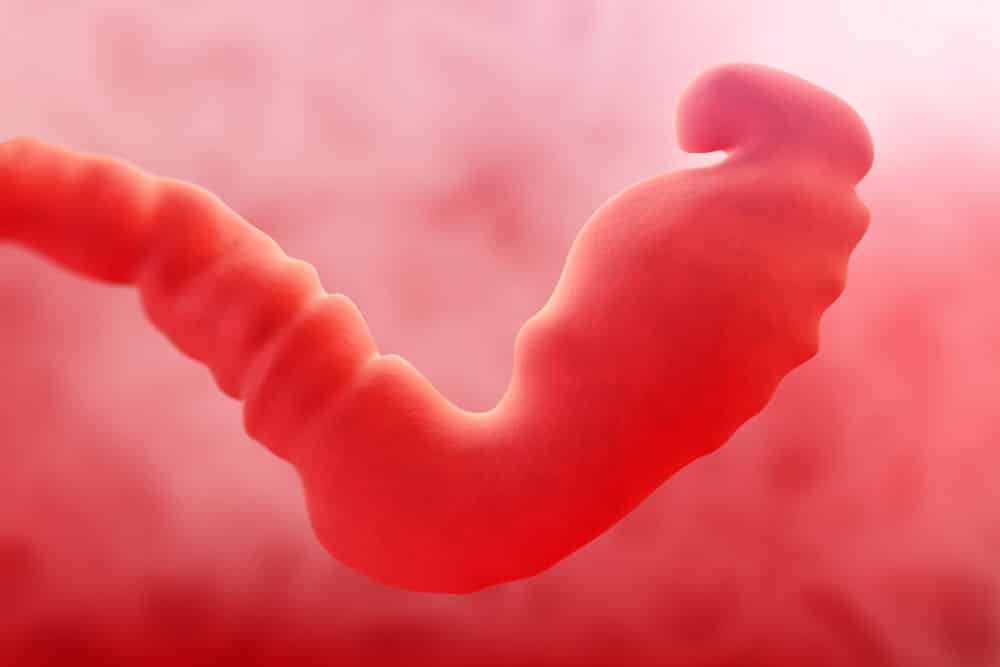
- Average fetal length at 3 weeks: 1/20th of a millimeter
- Average fetal weight at 3 weeks: next to nothing
Week 3 of pregnancy is when your baby actually starts to exist! Just a cluster of cells the size of a grain of salt (called a blastocyst), the cells are beginning to multiply. The heart, brain, spinal cord, and digestive system will start to develop immediately.
Though it seems teeny tiny at less than the size of a pin head, it could actually be seen if it were on the outside, like the period at the end of this sentence.
Pregnancy Week 3 Symptoms
Believe it or not, there are a couple of signs that can occur in week three to indicate you’re pregnant – but most women won’t notice them.
There could be a mild feeling of pressure or cramping as the fertilized egg implants in your uterus. Some women even experience a metallic taste in their mouths, like sucking on pennies! (This might not go away for a while, either, but it can be controlled with citric drinks, sour candy, and brushing your tongue when brushing your teeth.)
Pregnancy Week 3 Video
Pregnancy Week 4 Development
Where is the baby located at 4 weeks?
Your baby has finally finished the journey from your ovary down the fallopian slip ’n’ slide to your uterus!
What does a baby look like at 4 weeks?
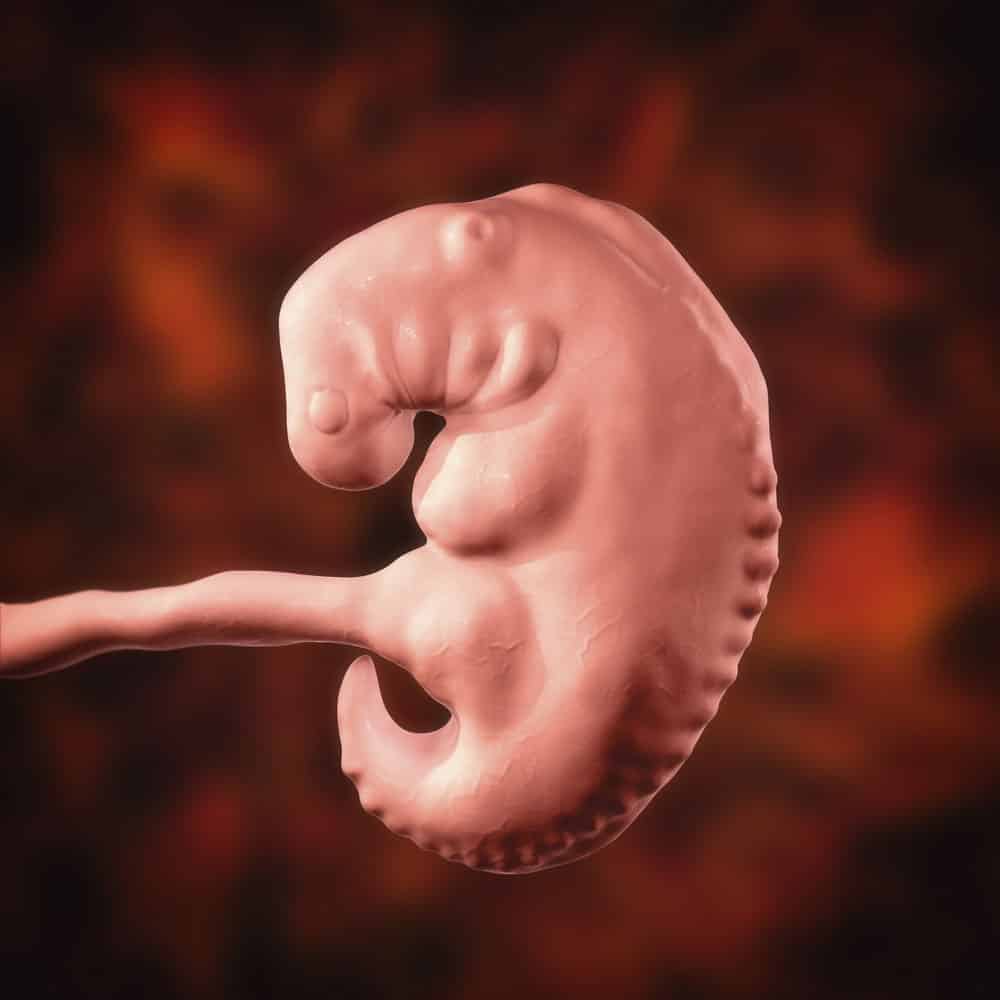
- Average fetal length at 4 weeks: 2 millimeters
- Average fetal weight at 4 weeks: next to nothing
The blastocyst splits into two groups – what will be your baby, and the placenta that nourishes it. The placenta starts out as a yolk sac, which grows while the amniotic sac (bag of water) forms around the baby. It’s producing the hCG flowing through your body (that makes you crazy!).
The other half is now an embryo with three layers of cells. The first (the endoderm) turns into your baby’s digestive system, thyroid, and lungs. The second (the mesoderm) becomes the baby’s heart, genitals, bones, blood system, and muscles. The outermost layer (the ectoderm) becomes the baby’s nervous system (including the brain), hair, skin, nails, breasts, sweat glands, and eyes. Arm and leg nubs are sprouting!
If you’re having twins, you might already be able to see two little bundles of cells on a clear ultrasound!
Pregnancy Week 4 Symptoms
This week may feel a lot like PMS, which can be disappointing when you don’t know you’re pregnant yet.
You can have cramping, bloating, mood swings, tender breasts… You may even have some spotting of blood, which can occur when the fertilized egg fully implants into the uterus. However, most women never feel or see a thing (I never did!).
A super-early-detection pregnancy test, like the Clearblue Digital pregnancy test I used to find out I was pregnant with my son, can turn up positive now!
The hormones flowing through your body also tend to cause mood swings throughout the first trimester before leveling off. If you’re feeling a little crazy, sad, or manic, just remind yourself there’s lots of weird stuff happening in your body and it won’t last forever.
Pregnancy Week 4 Video
Pregnancy Week 5 Development
How many months pregnant is 5 weeks?
5 weeks equals one month pregnant!
Where is the baby located at 5 weeks?
Firmly implanted in your uterus, the baby is hanging out with a cozy little yolk sac that will later become the placenta.
In the cases of a gestational sac miscarriage at 5 weeks, the baby never makes it past the blastocyst phase to become an embryo. While still a painful loss, these empty sacs are usually a sign of an unviable pregnancy.
How does a baby look at 5 weeks?
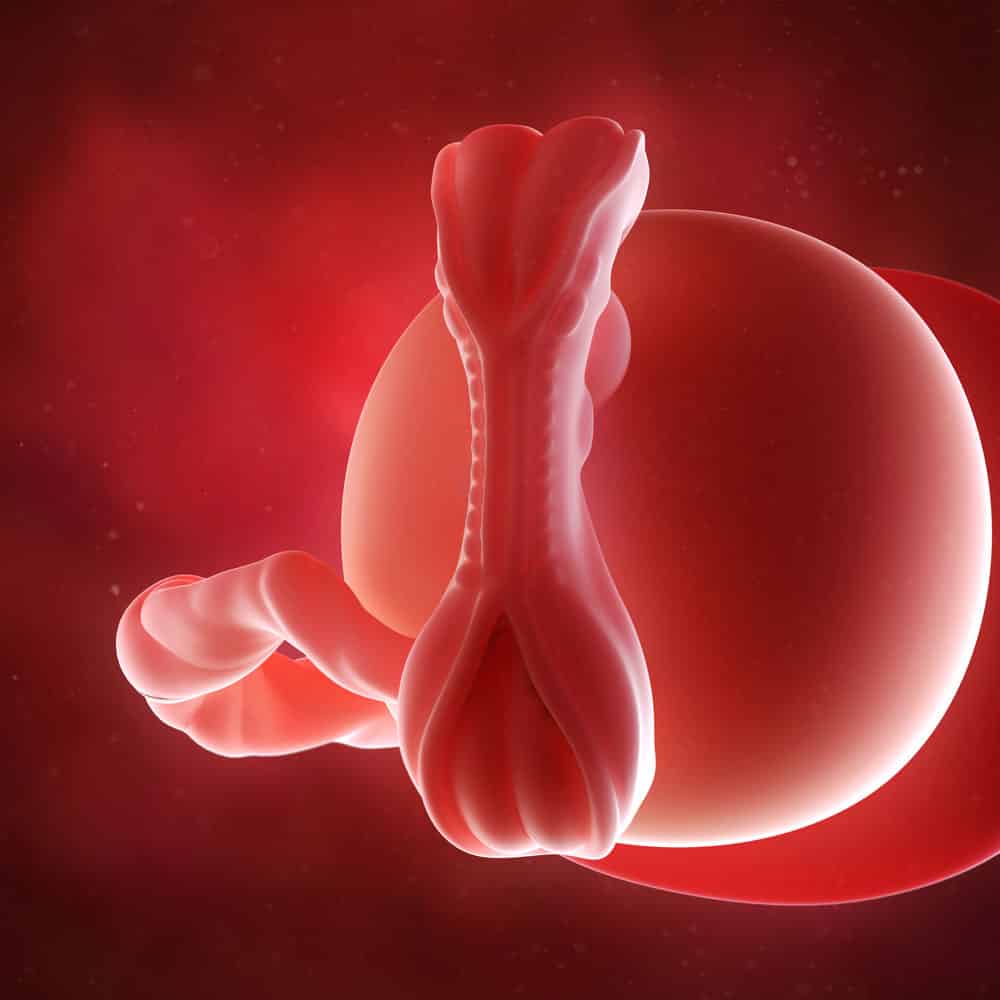
- Average fetal length at 5 weeks: 3 millimeters
- Average fetal weight at 5 weeks: next to nothing
Not gonna lie, your baby is ugly right now. It looks like a friggin’ tadpole, with a tail and everything. The part you’ll fall in love with, though, is the developing heart. The neural tube is also starting to form, which will later be your baby’s brain and spinal cord.
It’s super important to stay away from hot tubs, saunas, and anything else that dramatically raises your body temperature throughout pregnancy, ESPECIALLY while the neural tube forms.
Pregnancy Week 5 Symptoms
Who gives a crap about your symptoms when you can finally CONFIRM you’re pregnant!? Yes, mama, you can finally take any old drugstore pregnancy test and get a positive result at this point, thanks to the high level of the hCG hormone in your body. I enjoyed this part so much, I peed on at least 5 of them the first time I was pregnant just because I loved seeing the result pop up!
Unfortunately, you may suddenly feel exhausted or nauseous. Excessive saliva may give you a false sense of wanting to throw up, too. Roughly half of all pregnant women experience morning sickness, which means half never throw up (like me!). And FYI, “morning” is just a thing people say – it can strike at ANY time of the day (or night).
If you’re throwing up so much you can’t eat or keep down any food at all, your doctor needs to know right away because this is a sign of hyperemesis gravidarum, a serious condition that can last throughout pregnancy and lead to bed rest and IV nutrition.
You may find yourself slapping your partner’s hands away from your boobs as they become tender. Food cravings and aversions can even start this early!
In pregnancy week 5, cramps and bleeding are not necessarily a sign of anything bad happening. It’s possible your little bean had a forceful implantation upon landing in your uterus. But if the bleeding gets heavy like a period or the cramps are more severe than period pain, talk to your doctor!
One of the least talked about side effects of pregnancy is your suppressed immune system. Because a baby is technically a foreign body inside YOUR body, your immune system goes lax so that your baby isn’t rejected. This means throughout your entire pregnancy, you’ll be more prone to catching colds, the flu, and a host of other illnesses.
What’s worse is much of your usual medicated relief, like Chloraseptic for a sore throat, is a no-no during pregnancy. Just before 6 weeks into my first pregnancy, I was bedridden for two weeks with an upper respiratory infection that produced enormous amounts of green mucus and a dangerously high fever – one of the sickest times of my life.
Because it was viral, not even pregnancy-safe antibiotics could ease my discomfort. I worried for weeks that my high fevers were going to damage the fragile embryo in my womb – until a Neural Tube scan finally showed she was 100% perfect.
Talk to your doctor about what medicines are safe to take, and use Tylenol (NOT Advil) to keep any fevers under control, especially in the first several weeks of pregnancy when the oh-so-important neural tube is developing.
Pregnancy Week 5 Video
Pregnancy Week 6 Development
How many months pregnant is 6 weeks?
6 weeks equals over one month pregnant!
Where is the baby located at 6 weeks?
Baby hasn’t moved around much yet, since she doesn’t need a lot of space – but you can now officially call that bundle of joy an embryo instead of a blastocyst!
Brace yourself for one of the most emotional moments of your life, because this week you might be able to hear the baby’s heartbeat (well, not really, but vibrations that sound like a heartbeat) at the doctor’s office with a vaginal ultrasound! If you do hear the “heartbeat” at 6 weeks, the chance of miscarriage drops to an average of 22%.
What does a baby look like at 6 weeks?
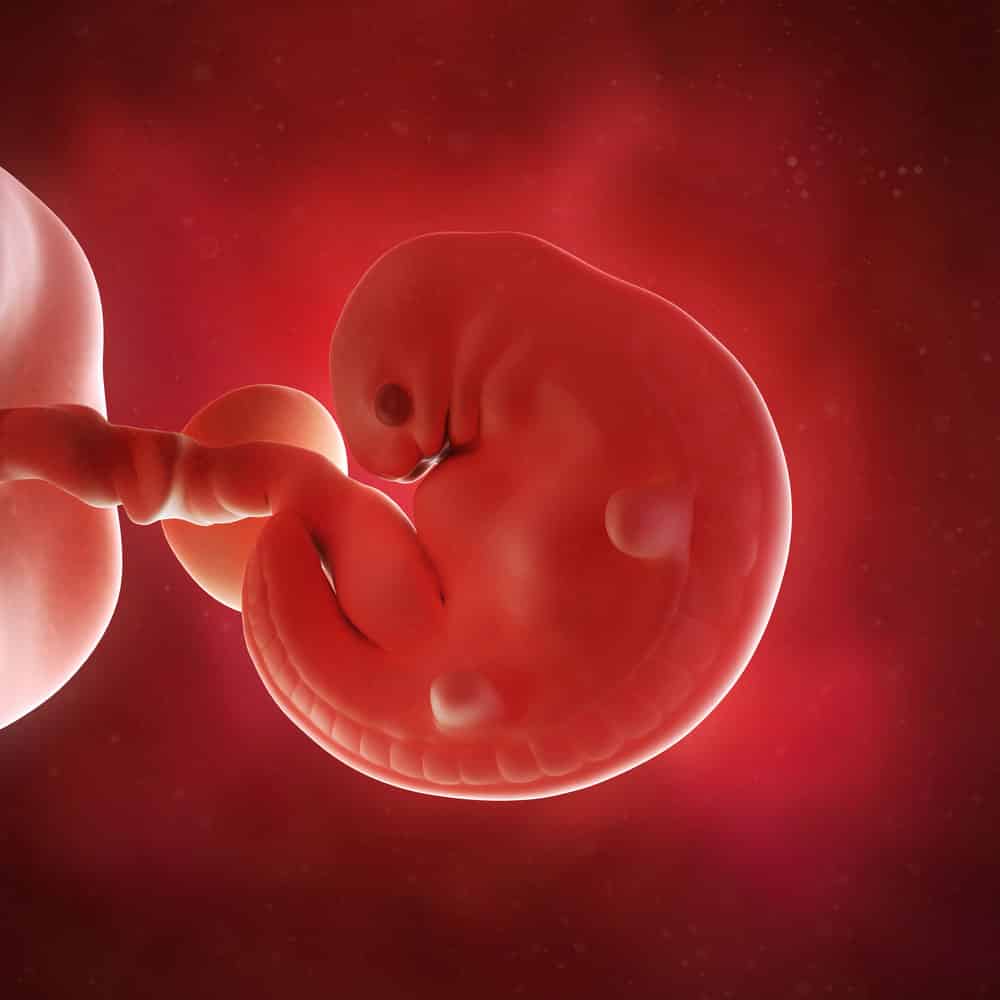
- Average fetal length at 6 weeks: 1/4 inch
- Average fetal weight at 6 weeks: next to nothing
There’s a creepy-cute little face with a nose and jaw starting to form on the tadpole! The lungs have started developing, but have a long way to go. The hand and feet buds are webbed, but will eventually turn into fingers and toes. Baby’s all curled up in the “fetal position” and will stay that way for a while.
If an ultrasound reveals an empty gestational sac at 6 weeks, one of two things may be the cause: you’re not actually 6 weeks along like you and your doctor calculated, or you have an unviable pregnancy. Unless your doctor can confirm the latter with certainty, don’t panic yet, mama – another ultrasound in a week or two may reveal a little bean (and an adjusted due date!).
Pregnancy Week 6 Symptoms
Bad news: frequent urination can start already. Not because baby’s fat butt is on your bladder yet, but because of increased blood flow to your pelvic area and increased efficiency of your kidneys. On the bright side, that increased blood flow can make sexy times a lot more enjoyable!
Heartburn and indigestion are symptoms that strike most pregnant mothers at some point. This can begin around week 6 as well, so take your time eating and don’t wear tight pants (they push on your stomach, increasing the risk). Also, it’s just an old wives’ tale that heartburn is a sign your baby will have lots of hair at birth. I never had any heartburn with either pregnancy, and both babies came out with a decent mop of hair!
In pregnancy week 6, cramps and bleeding are usually still normal. If the cramps are severe (worse than period pain) or the bleeding becomes heavy like your period, call your doctor right away. Plus side: your breasts (and nipples!) are getting bigger. Downside: They probably hurt, so playtime with your lover can get tricky.
As for gas and bloating, progesterone is the culprit here, but you can blame it on the dog. Eat fiber and drink water to prevent constipation. Being backed up will only make the discomfort from bloating worse!
Continuing symptoms:
- mood swings
- fatigue
- nausea
- tender breasts
- food cravings and aversions

